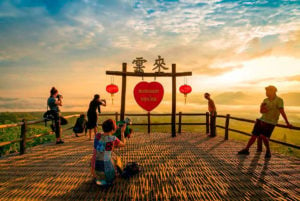Wat Huay Pla Kang – A Gorgeous Temple of Chiang Rai
Welcome to Wat Huay Pla Kang, an extraordinary temple nestled atop a lush hill in the vibrant city of Chiang Rai. This enchanting destination beckons both seasoned travelers and curious adventurers, boasting an irresistible charm that grows stronger the closer you draw near. Prepare to embark on a spiritual and cultural journey, as this Buddhist sanctuary seamlessly blends the captivating styles of Lanna and Chinese architecture.

Immerse yourself in the splendor of the nine-tiered pagoda that awaits within these hallowed grounds. Adorned with intricate balconies and offering breathtaking panoramas, this sacred site serves as a gateway to spiritual enlightenment. Marvel at the meticulously crafted sculptures of Buddha, adorned in hues of white and gold, along with revered deities and awe-inspiring Chinese dragons. Each step reveals a new facet of this artistic tapestry.
Wat Huay Pla Kang is a trove of discoveries, inviting you to delve into its rich history, delve into its profound significance, and behold the magnificent white statue of Guanyin. Let this travel guide be your trusted companion as we venture into the wonders of this remarkable temple, unearthing its hidden gems and capturing the essence of why it stands as an absolute must-see attraction in Chiang Rai. Prepare to be transported to a realm of tranquility and wonder as you embrace the magic that awaits at Wat Huay Pla Kang.
Location: 553, Moo 3, Tambon Mae Yao, Mueang District, Chiang Rai, 57100
Google Map: Check Direction
Plus Code Map: 7MFXWRX4+98
Latitude: 19.948437
Longtitude: 99.805813
Opening hours: from 7:00 a.m. to 9:30 p.m.
Entrance fee: Free
FB Official Page: Wat Huay Pla Kang
Start year of construction: 2005
Official temple status year: 2009
Founder: Abbot Phop Chok Tissuwaso
The Majestic History Of The Towering Temple And Big Buddha
Wat Huay Pla Kang, though a relatively new temple built in the early 2000s, still holds a history and profound significance that shines with the diversity and creativity of Buddhism. Its founder, the visionary monk Phop Chok Tissuwaso, embarked on a mission to transform an abandoned temple ruin into a Chinese-style marvel perched upon a hill.
Phop Chock Tissuwasa became its first abbot in July 2009 when it was converted into an official temple. Beginning with a small monk office meticulously designed by the first abbot himself, the temple complex gradually expanded over four years through generous donations and the tireless efforts of volunteers, entrepreneurs, and engineers.
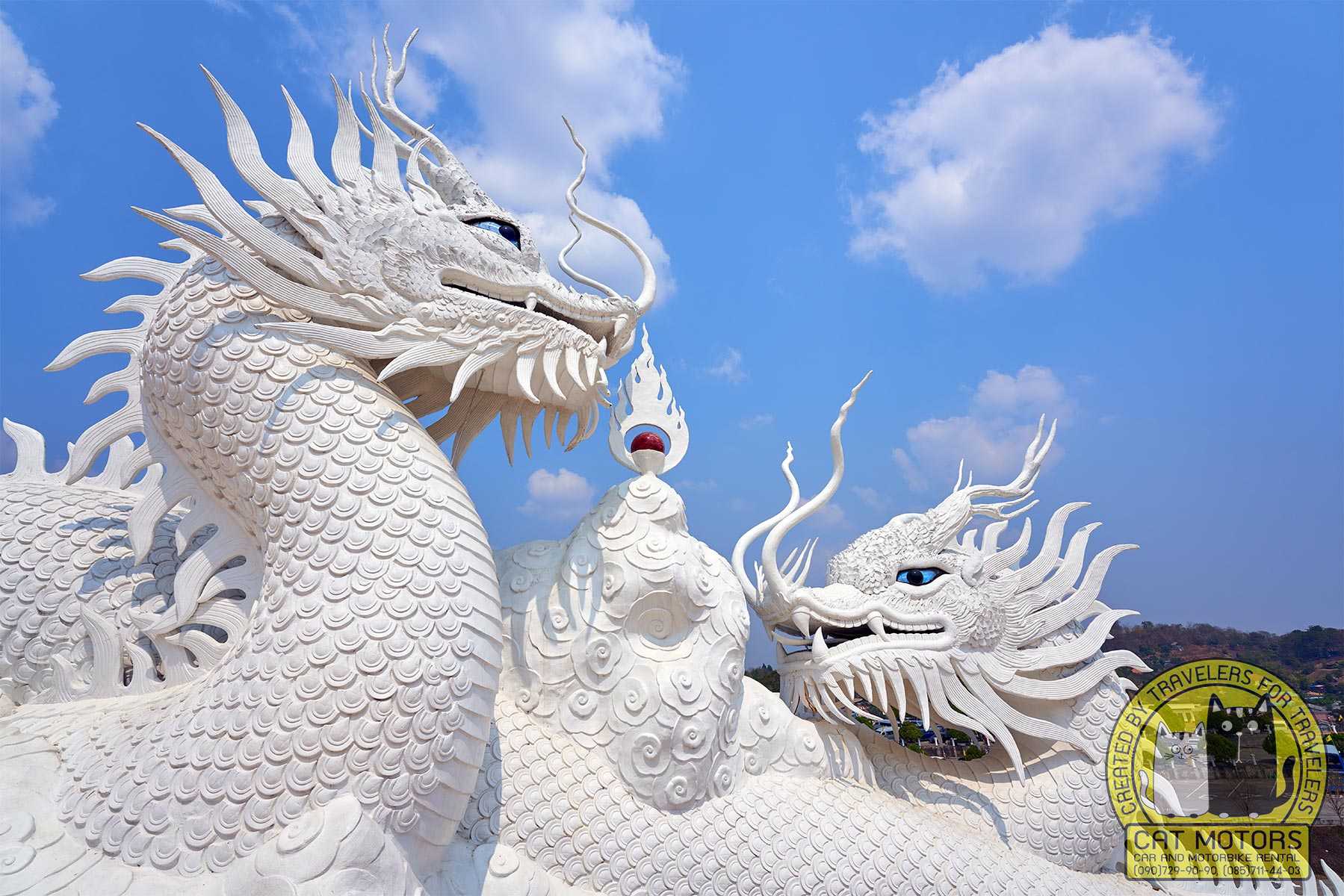
Its purpose was twofold: to pay homage to Guanyin, the compassionate bodhisattva revered across China and Asia, and to showcase the harmonious blend of Chinese and Lanna architecture, both deeply influenced by Buddhism.
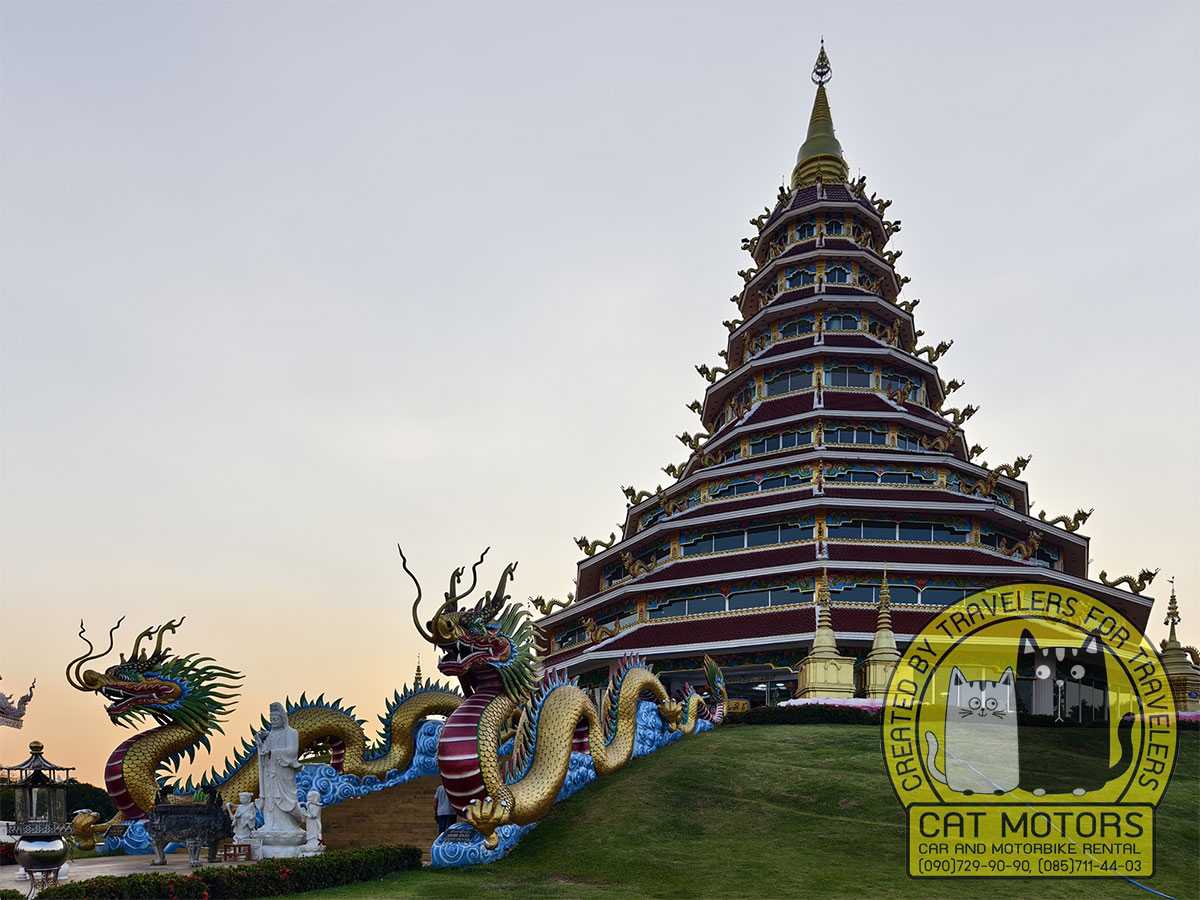
This towering attraction holds immense cultural and spiritual significance, serving as a testament to Thailand’s convergence of Buddhist traditions. Enthusiasts flock to the temple to offer prayers to Guanyin, seeking blessings of health, prosperity, and happiness. The tranquil ambiance of the temple also provides a sanctuary for meditation and contemplation.
The temple is an awe-inspiring destination for tourists that leaves a lasting impression. From breathtaking panoramic views to the intricate craftsmanship of its structures, visitors are spellbound by the temple’s grandeur. It stands as a testament to its founder’s unwavering vision and dedication and its patrons’ steadfast support and faith.
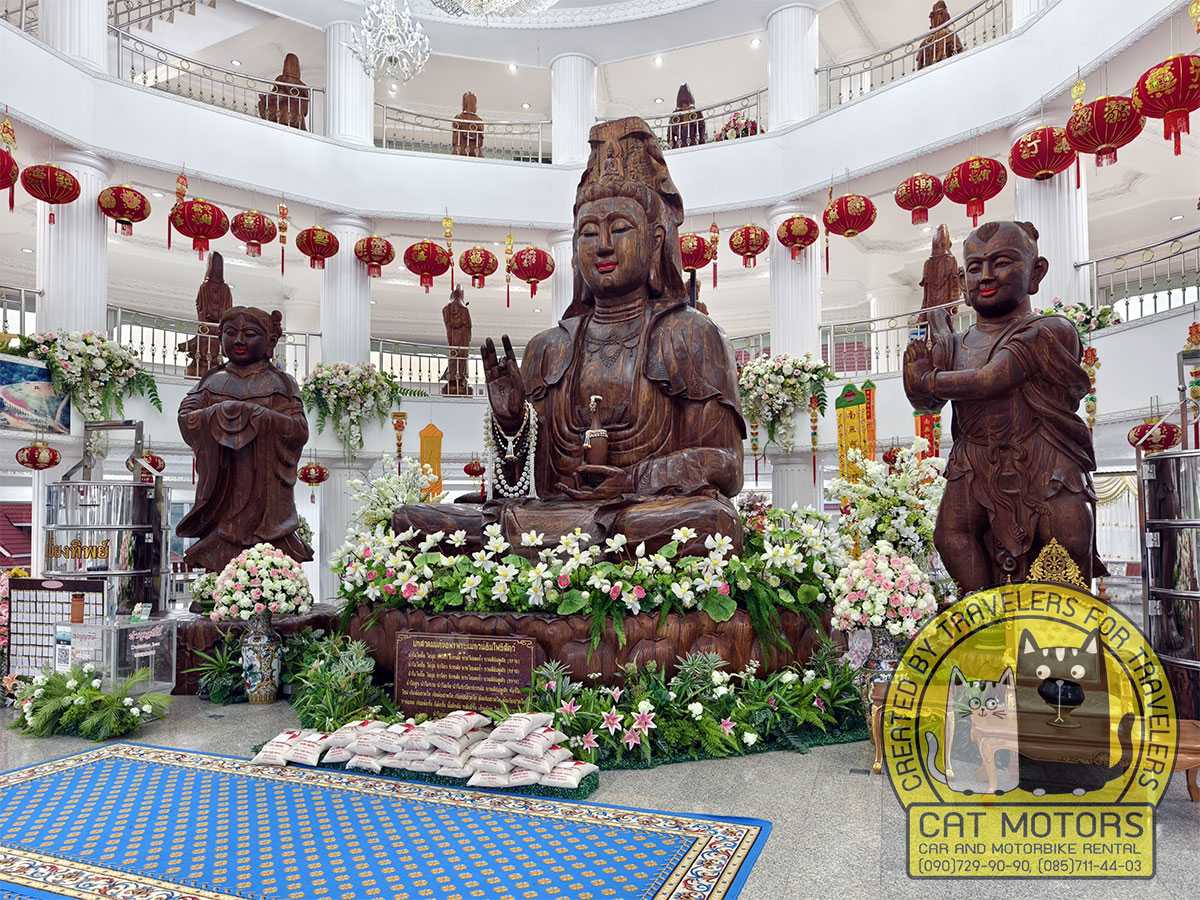
Exploring The Design Of Wat Huay Pla Kang
The essential detail to remember is that the Buddhist temple demonstrates the thoroughly blended fusion of Chinese and Lanna architectural styles. The temple complex features three main structures, each exuding its own unique allure:
The Towering Nine-Tiered Pagoda
Towering into the skyline, the nine-tiered pagoda, also known as the Phop Chock Dhamma Chedi, commands attention with its circular pyramid shape, a departure from the traditional round or square pagodas. Colorful mosaics and intricate carvings adorn the lower tiers, while sandalwood and white stucco statues of Buddha and revered deities grace each floor.
The pagoda is guarded by majestic Chinese dragons floating atop clouds at its entrance stairway and boasts a charming blend of Thai and Chinese influences. Finally, reinforced with concrete and steel, its exterior is adorned with white plaster, creating a striking visual impact.
The nine-tiered pagoda at Wat Huay Pla Kang holds sacred objects on each floor, including a carved sandalwood Guanyin image, statues of the Goddess in different postures, a replica of Buddha Sothon, and a Thousand-Hands Guanyin image. The pagoda is followed by an elegant all-white Phra Ubosot, featuring superb stucco patterns and a prominent white Buddha image.
The Majestic White Statue Of Guanyin
Dominating the landscape with its grandeur, the giant white statue of Guanyin, the Chinese Goddess of Mercy, stands at a towering 90 meters (the largest Guanyin Buddha in Thailand) atop a lotus pedestal. Also, depicting the compassionate bodhisattva, the statue emanates grace and serenity.

Crafted from a combination of plaster and cement and coated in fresh white paint, it enthralls visitors with its feminine features. And ascending to the statue’s summit via an elevator, guests are treated to panoramic views and can marvel at the intricate details adorning the statue’s robes and crown.
Don’t forget to visit Singha Park if you travel to Chiang Rai.
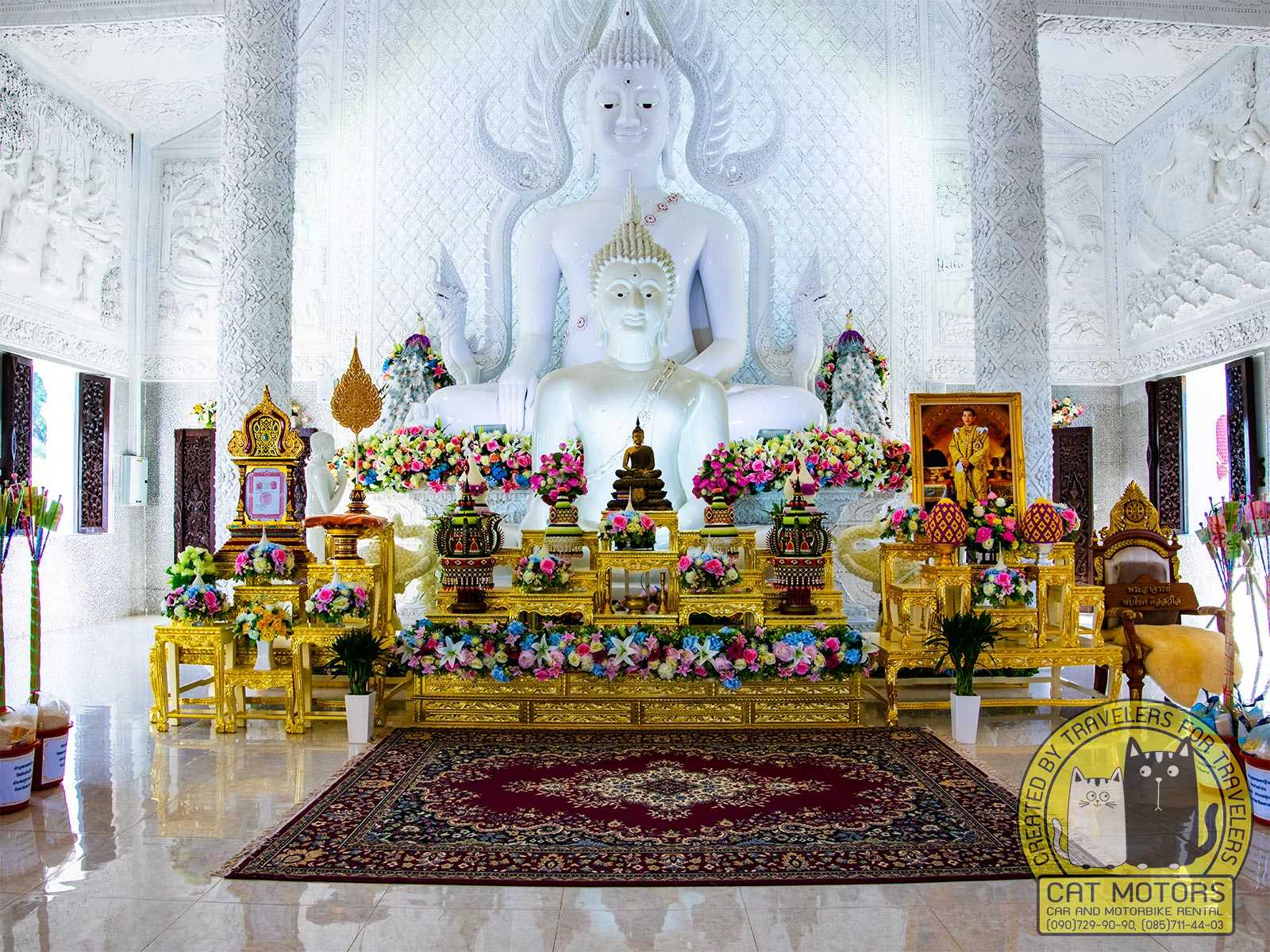
The Traditional Thai Temple Hall
The traditional Thai temple hall, located at the foot of the hill, showcases the elegance of Lanna architecture. Its multi-tiered roof, gilded decorations, and vibrant red columns are a visual delight. Within its sacred walls, a large Buddha image takes center stage, surrounded by smaller Buddha figures and depictions of revered monks.
Paintings and murals depicting scenes from Buddhist history and mythology further enrich the temple hall’s cultural tapestry. Expertly crafted from wood, bricks, and tiles, it indicates traditional craftsmanship and attention to detail.
The Guanyin Statue: Embodying Compassion And Grace
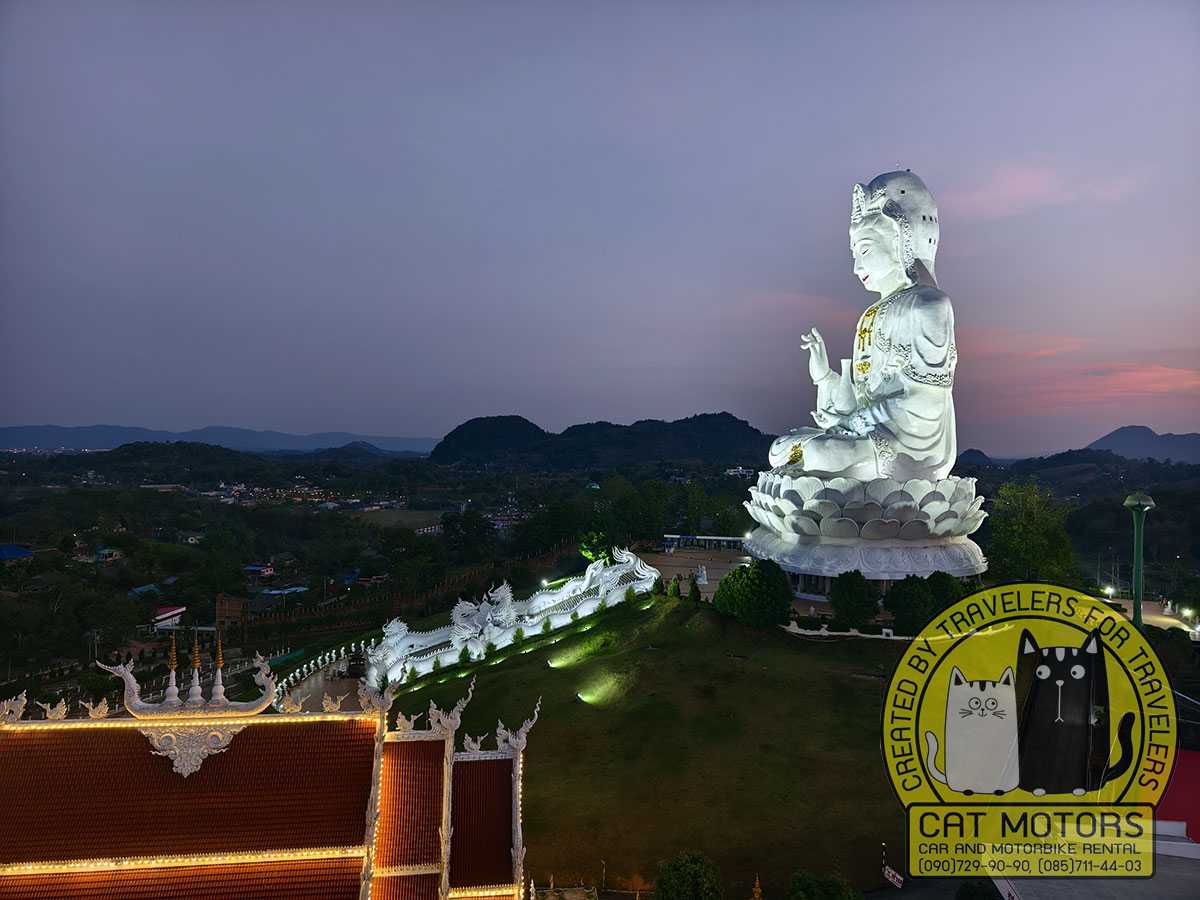
The large white Guan Yin statue draws attention as it surveys the Wat Huay Pla Kang temple complex from atop a lotus pedestal. It is most notably the main attraction that lures visitors from all over Chiang Rai and Chiang Mai to visit at least once! Known as one of Thailand’s tallest Guanyin statues, this awe-inspiring sculpture serves as a focal point visible from miles away.
Fun fact: Unlike a representation of the Buddha, it embodies Guanyin, the bodhisattva of compassion, revered across China and various Asian nations. Devotees believe the Goddess to be a source of mercy and protection.
With graceful feminine features, the Goddess holds a jade vase in her left hand while raising her right hand towards the sky in a Varada Mundra gesture. The jade vessel symbolizes the nectar of compassion and wisdom, while her gesture signifies an unwavering vow to alleviate the suffering of all thinking beings. And when traveling to the top, you can expect the following:
- Ascending the Chinese Dragon Stairway, you’ll witness a captivating sight – the dragons gracefully descend on each side of the staircase, seeming to soar through the air atop ethereal clouds. Before ascending, you’ll be welcomed by a spacious open seating area adorned with spiraling white Chinese dragon motifs on lamps.
- As you make your way up the stairway, the presence of Guanyin becomes increasingly overpowering, her colossal form dominating the sky. It feels as if her watchful gaze follows your every step, heightening the sense of reverence and awe. And when you turn around, you’ll be swept away by the breathtaking vistas of the surrounding landscape.
- Exploring further, you’ll encounter a collection of intricately crafted mini statues, each arranged with meticulous attention to detail. These unique sculptures offer a glimpse into the temple’s rich symbolism and artistic appeal.
- Visitors can ascend via stairs or take the elevator beneath the majestic statue to reach the pinnacle on the 25th floor and witness the awe-inspiring views. It is also where you find walls covered with depictions of Guanyin, mythical creatures, and trees made from white stucco (cement-based material). Moreover, the reward of seeing the magnificent panoramas of Chaing Rai and Kok River awaits you at the summit!
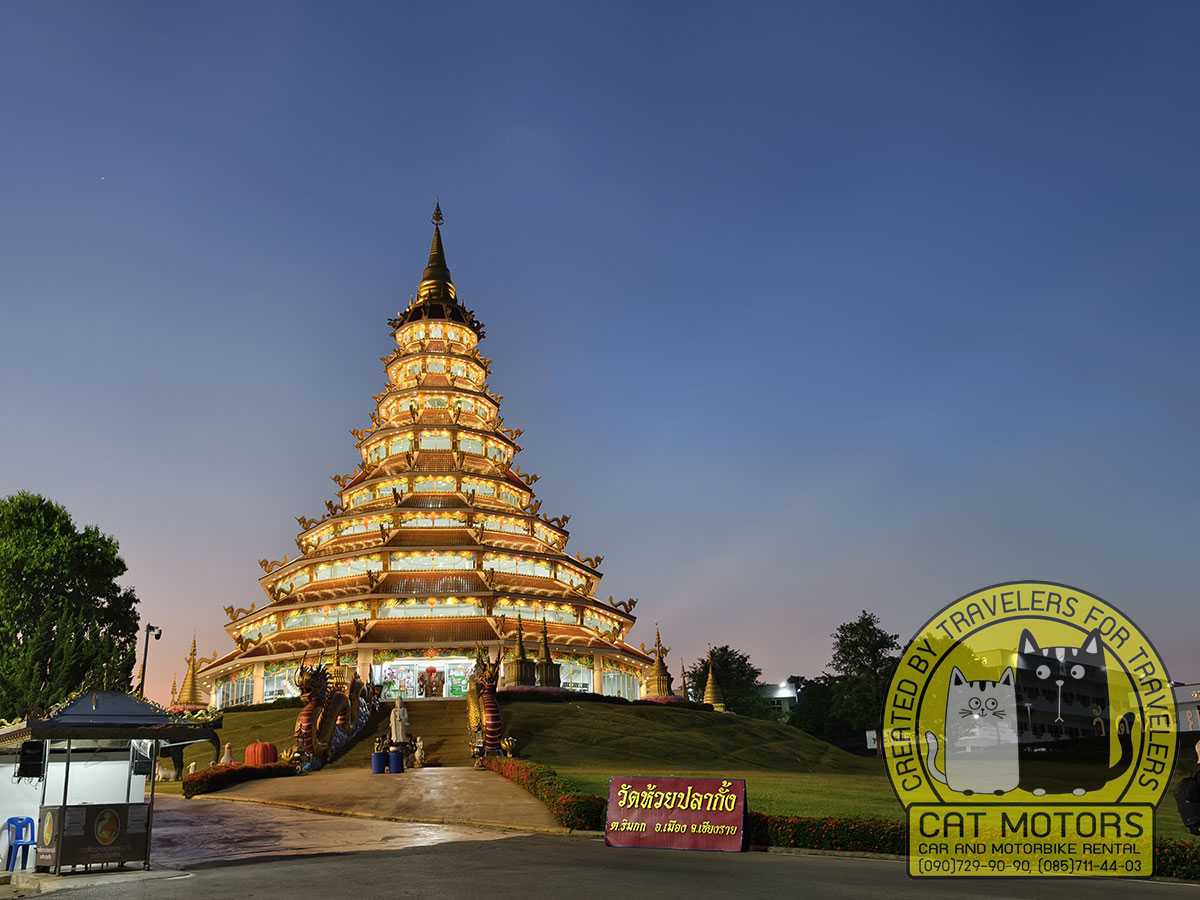
It’s important to note that shoes must be respectfully removed when entering the sacred area beneath the figure.
From lush rice paddies to majestic forests and mountains, the views from the statue’s pinnacle are breathtaking. Overall, adorned with white dragons and mythical beings from Buddhist cosmology, the top floor enchants guests with its mystical ambiance.
If you’ve come to the North of Thailand to vacation with family or friends and haven’t yet chosen where to go, check out our list of the most popular Chiang Mai attractions.
What You Need To Know Before Exploring Wat Huay Pla Kang
Nestled in the serene outskirts of Chiang Rai, Wat Huay Pla Kang (Google Maps) is approximately 12 kilometers (7.5 miles) from the city center. Reaching the temple is easily done by rented transport, taxi, or the traditional shared pick-up truck known as a songthaew. Plan your visit between 7:00 am and 9:30 pm to savor the temple’s tranquil ambiance.
Admission to the temple grounds is free, but a nominal fee of 40 baht grants access to the elevator ascending the towering Guanyin statue. However, you could also consider donating to support the temple’s ongoing maintenance and development.
Take a moment to browse the souvenir shop or relax at the Phok Chop Restaurant (Wat Huai Pla Kang almshouse), where delectable food and refreshing beverages await.
With that in mind, please follow these rules while visiting to guarantee a pleasant and polite experience:
- Dress modestly, covering your shoulders and knees as a mark of reverence.
- Kindly remove your shoes before entering any of the sacred buildings.
- Refrain from touching or pointing at statues or images, maintaining their sanctity.
- Embrace a peaceful ambiance by refraining from loud noises and avoiding flash photography.
- Show respect to monks and nuns by bowing slightly as you pass them, refraining from turning your back.
Most importantly, don’t forget to enjoy your experience. Allow the temple’s architectural splendor, captivating artwork, and picturesque surroundings to transport you to a realm of profound beauty. Discover this hidden gem, offering a glimpse into the captivating spirit of Chiang Rai that you simply cannot afford to miss!
Nearby Attractions and Activities
Immerse yourself in attractions, Thai flavors, and enchanting experiences that await beyond the gates of Wat Huay Pla Kang. Chiang Rai boasts many nearby attractions and activities, each poised to captivate and inspire. Here are some of the most striking options:
Wat Rong Khun
Wat Rong Khun (White Temple): This inspiring temple is just 13.5 kilometers (8.4 miles) from Wat Huay Pla Kang.
The privately owned masterpiece, conceived by local artist Chalermchai Kositpipat, dazzles with its immaculate white exterior adorned with mirrored glass fragments. Explore the intricate sculptures and paintings that weave Buddhist mythology and popular culture together. Accessible by car, taxi, or songthaew, the temple welcomes visitors from 8:00 am to 5:00 pm, with an admission fee of 50 baht per person.
Clock Tower Chiang Rai
Golden Clock Tower in Chiang Rai: Just 5.5 kilometers (3.4 miles) away, the Golden Clock Tower is both a landmark and a mesmerizing sight.
Also crafted by the artistic genius Chalermchai Kositpipat, this architectural marvel blends Lanna and modern styles. At 7, 8, and 9 pm, prepare to be enchanted by a spectacular light and sound show that dances across the tower’s facade. Accessible 24/7 with no admission fee and surrounded by tasty restaurants, the Clock Tower stands as a shining tribute to King Bhumibol Adulyadej.
Wat Rong Suea Ten
Wat Rong Suea Ten (Blue Temple): Merely 4.7 kilometers (2.9 miles) away lies another captivating wonder—a temple boasting contemporary design and a mesmerizing blue hue.
Yet another craft by one of Kositpipat and his disciples, this sanctuary showcases a grand blue hall, an exquisite white Buddha statue, and vibrant paintings and sculptures recounting Buddhist tales. The temple’s name is also directly translated to “the house of the dancing tiger.” No admission fee is required; you can journey by car, taxi, or songthaew to explore this tranquil haven from 6:00 am to 6:00 pm.
Chiang Rai Night Bazaar
Chiang Rai Night Bazaar: As twilight descends, embrace the vibrant energy of this bustling market, located 5.8 kilometers (3.6 miles) away.
Wander through stalls teeming with clothing, accessories, handicrafts, and antiques—many crafted by local hill tribes. Delight your taste buds at the food courts, savoring a myriad of enticing Thai and international dishes. Relish live music and cultural performances on stage, immersing yourself in the local ambiance.
The Chiang Rai Night Bazaar springs to life from 6:00 pm until midnight, and you can easily reach it by public or rented transport. Best of all, no admission fee grants you unrestricted access to this captivating cultural hub!
Our Summary
Wat Huay Pla Kang in Chiang Rai is a remarkable temple that beautifully combines Lanna and Chinese architectural styles. Its towering nine-tiered pagoda, majestic white statue of Guanyin, and traditional Thai temple hall offer a captivating blend of spirituality, cultural immersion, and artistic craftsmanship.
The temple’s history, significance, and awe-inspiring design make it a must-visit attraction in Chiang Rai. Whether seeking spiritual enlightenment, cultural exploration, or simply breathtaking vistas, Wat Huay Pla Kang and its surrounding remarkable attractions provide a unique and enriching experience that should not be missed!
Weather Forecast
When traveling to Wat Huay Pla Kang, be sure to check the weather forecast in advance. Especially if you want to stay here overnight to take delightful night photos of the site.
FAQ
Wat Huay Pla Kang is an important and visually stunning temple in Chiang Rai, known for its blend of Thai and Chinese architectural styles. The tranquil ambiance and the impressive views make it a must-see in the region.
The architecture of Wat Huay Pla Kang is a beautiful mix of Chinese and Thai influences. The temple complex includes a massive statue of the Goddess of Mercy, Guan Yin, a stunning nine-tiered pagoda, and intricately designed prayer halls.
Wat Huay Pla Kang was built in the late 20th century. Despite being relatively new, it has quickly become an iconic landmark in Chiang Rai due to its majestic architecture and the large Guan Yin statue.
The central figure, Guan Yin, is known as the Goddess of Mercy and Compassion. There’s a belief that paying respects to her brings blessings of peace, kindness, and protection.
Its uniqueness lies in its architecture that merges Thai and Chinese elements, as well as the towering Guan Yin statue, one of the tallest in the world. Moreover, the nine-tiered pagoda that visitors can climb offers panoramic views of the surrounding landscapes.
The large statue is of Guan Yin, the Goddess of Mercy and Compassion. It represents benevolence, kindness, and sympathy in the face of suffering, a central concept in Buddhism.
The nine-tiered pagoda is not just a beautiful architectural feature but also a symbol of Buddhism. Each level represents a different realm in Buddhist cosmology. Visitors can climb the pagoda, and from the top, they can witness a panoramic view of Chiang Rai.
As a place of Buddhist worship, the temple observes traditional Thai Buddhist ceremonies and rituals. These include daily prayer services, merit-making activities, and special observances on Buddhist holidays.
Locals often come to the temple for prayer and meditation. It’s also a place for community gatherings, especially during religious holidays and festivals. Furthermore, it’s a significant cultural landmark, shaping the identity and spirit of the local area.
Tourists can admire the intricate architectural details, climb the nine-tiered pagoda for a stunning view, and participate in temple rituals. The site is also beautifully lit up at night, providing a magical spectacle.
Wat Huay Pla Kang is a testament to the blend of Thai and Chinese influences in architecture, showcasing how these styles can create a unique and harmonious design. Its prominence has also inspired other temples in the region.
Despite its relatively recent construction, the temple complex has grown to include several additional structures, like the nine-tiered pagoda. It has also evolved to become an important tourist attraction, without losing its spiritual significance to the local community.
Discover the hidden gems of Northern Thailand with our detailed travel guides, featuring the best scenic routes and local highlights. Start your journey by exploring our bike rental in Chiang Mai. Don’t forget to review our terms and conditions to ensure a smooth rental process. With these resources, you can confidently navigate mountain trails and charming villages.
Our travel advice sections provide a wealth of information on how to stay safe and make the most of your journey. Learn about the best times to visit key attractions, enjoy local festivals, and manage various road conditions. These insights will enhance your travel experience, making it both safe and enjoyable. Let us guide you through the stunning landscapes and vibrant culture of Northern Thailand, ensuring your trip is unforgettable.
- Author: Natcha Lindberg
- Updated: 16/05/2025
- No Comments


